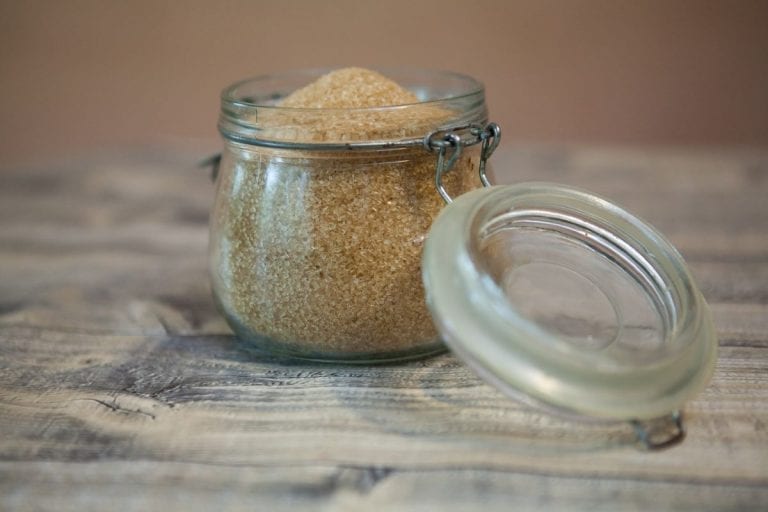If you always thought that the popularity of flax seeds was a passing trend, we are here to prove you wrong. Among its first admirers, in fact, is Hippocrates, the father of Greek medicine, who already in the fifth century praised its soothing properties against coughs and intestinal disorders. Not only that: some time later, these beans full of virtue also conquered the palate of Emperor Charlemagne, who loved to taste them daily during banquets, to the point of enacting legislative measures to encourage the population to eat them. Excluding the hypothesis of a recent introduction into our diet, however, it must be said that only in recent years the products obtained from the pressing and grinding of flax seeds - respectively, oil and flour - have aroused the curiosity of consumers, conquering a significant slice of the market. The former is used both as a food supplement, due to the good ratio between omega 3 and omega 6, and as an antioxidant cosmetic treatment. And what about flaxseed flour?
Flaxseed flour: a great alternative to seeds
To promote digestion and intestinal absorption of flax seeds, it's best to let them soften for a few hours soaked in water: their outer coating, called bark, is a little too tough to chew. On the other hand, the resulting flour contains all the nutrients present in the grain, with the advantage of being an addition or substitution for ingredients in common household preparations, like bread, cookies, and plum cakes. The colour, tending to dark yellow (with more or less accentuated shades of hazelnut, depending on the seed variety) makes it similar to chickpea flour, differing for its thicker grain size and greasy texture. It's enough to feel it with fingertips to feel the presence of the fatty component. As for texture, we could compare it to the dense and compact texture of chestnut flour. In fact, in leavened products both flours are usually diluted with water, milk or fruit juices to avoid making the dough too heavy.
Properties and nutritional value of flaxseed flour
Just like the seeds from which it's obtained (to prepare it at home, just grind flax seed in a coffee grinder, a spice grinder or using a mortar and pestle), flaxseed flour is a precious source of omega 3, the "good" fatty acids also present in oily fish, kiwi fruits and walnuts. Notable high amounts of B vitamins, proteins, calcium, phosphorus and magnesium, which make it a restorative and anti-fatigue food, with positive effects on mood. Carbohydrates and iron, on the other hand, are present in smaller quantities. All researchers agree that this product can offer valid help to those suffering from constipation, due to the considerable amount of fibers and pectins, capable of absorbing water inside the intestine. Furthermore, there is no shortage of studies on the prevention of important diseases such as breast cancer or on the reduction of bad cholesterol levels in the blood. And nutritional value? Similar to the numbers of almond flour, another high-lipid content ingredient. The energy intake, in fact, is close to 550 calories: it would be advisable to avoid consuming it in place of cereal-based flours and use it sparingly.
Flaxseed flour: recipes and culinary use
Ever employed it in desserts, instead of eggs? Thanks to its thickening properties, flaxseed flour lends itself to vegan dishes for all needs, from breakfast donuts to savoury flans and breads with vegetables. If looking to experiment with new pairings in the kitchen, add it to the mixture of our pumpkin and carrot vegetable meatballs, or add it in small doses (20-30%) to your favorite mix of flours for home baking. For the less daring, however, consider preparing delicious crackers or breadsticks made with almond flour, wholemeal flour and flaxseed flour: powerhouse of fiber that competes with the best supplements.
Equally simple is the recipe for bechamel sauce sans butter, obtained by thickening 80 grams of "00" flour with a handful of flaxseed flour, 90 grams of flaxseed oil, a liter of skimmed cow's milk (or your favourite milk alternative), a pinch of nutmeg and salt. Here's the procedure: Heat the oil and milk in two different saucepans over low heat; after a few minutes, pour the two flours into the oil and mix vigorously with a whisk or a large spoon until golden. At this point, add the hot milk, slightly increase the heat and continue to mix everything to prevent the formation of lumps. When the béchamel has reached the right density, remove from the heat and let it rest. Our advice is using it to make vegetarian lasagna: the result will be surprising. If, on the other hand, you love cookies, here is a super healthy recipe by baker and pastry chef Luca Lacalamita of Lula-Pane e Dessert in Trani.
Lean cookie with flaxseed flour, Apulian almonds and chocolate
"Here is my take on a recipe for typical American-style cookies, revisited by reducing the amount of fats and sugars," explains Luca. “It's a perfect shortbread cookie for breakfast or a snack! It's part of our line of sweet treats using typical Apulian ingredients, with particular attention to the health aspect."
Ingredients:
300 g extra virgin olive oil
10 g soy lecithin
440 g water
500 g brown sugar
50 g whole-grain coconut sugar
7 g salt
800 g wholemeal flour (preferably from organic Gentil Rosso wheat)
200 g flaxseed flour
600 g raw unpeeled almonds, chopped
600 g dark chocolate 64% cacao
In a saucepan or in the microwave, heat the water to 35°C (check with a kitchen thermometer) and dissolve soy lecithin with an immersion mixer. Add the extra virgin olive oil slowly and complete the emulsion, until set and homogeneous. Transfer the sugars and flours to a stand mixer with a leaf attachment. Mix thoroughly.
Blend the almonds to a fine powder and cut the chocolate with a knife to obtain coarse pieces. Incorporate the liquids into the flour and pour everything into the mixer; mixing to obtain a homogeneous mixture. At this point add the almonds and the chocolate.
The dough will be ready when it appears smooth and uniform; the presence of water and extra virgin olive oil will also make it particularly fluffy. Place it in a pastry bag and prepare a baking tray lined with parchment paper. Place small amounts of dough on the surface, considering that each cookie should be round and weigh approximately 25 grams. Bake in a convection oven at 155°C for 10 minutes or, in any case, until golden brown. After cooling and if baked correctly, the cookies should be chewy and crumbly.
Luca Lacalamita's signature cookies are available on the Lula e-commerce site, along with many other healthy sweet treats. To purchase, visit the online store
Lula - Pane e Dessert- www.lulatrani.it
by Lucia Facchini


 “In Chianti, warehouses are full and prices are falling”. The economic crisis of Tuscan wine explained by Giovanni Busi
“In Chianti, warehouses are full and prices are falling”. The economic crisis of Tuscan wine explained by Giovanni Busi US tariffs will take effect on 1 August for everyone (including wine). Prosecco DOC: “it’s impossible to plan for the future
US tariffs will take effect on 1 August for everyone (including wine). Prosecco DOC: “it’s impossible to plan for the future Diego Rossi of Trippa opens a new osteria: what you can eat at Nino Osteria con Cucina in Milan
Diego Rossi of Trippa opens a new osteria: what you can eat at Nino Osteria con Cucina in Milan How you eat at Sentiero, the restaurant Elba Island was missing
How you eat at Sentiero, the restaurant Elba Island was missing






